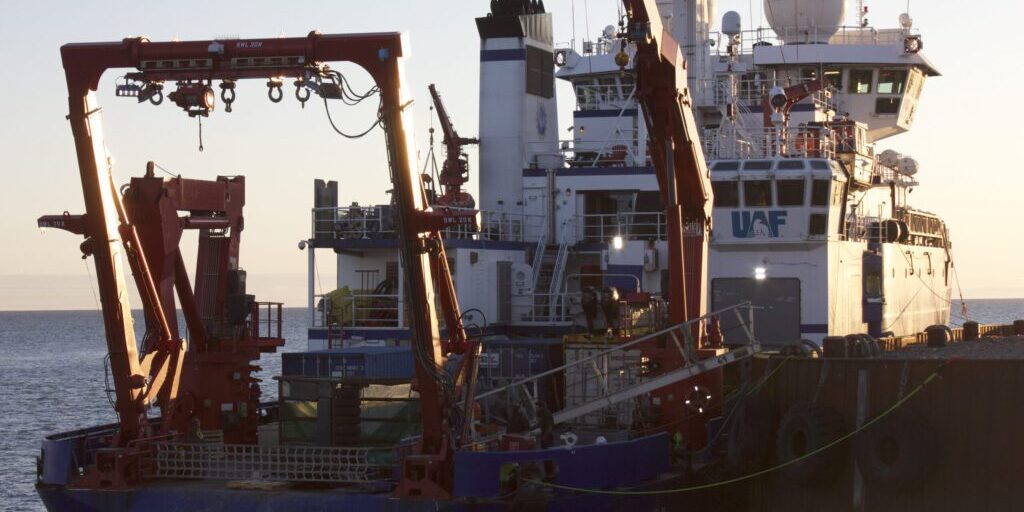Recent research suggests that climate change increases the input of mercury into the Arctic Ocean, and ultimately in the amount found in fish and marine mammals.
Robert Mason, a professor of marine sciences at the University of Connecticut, shared his findings live from the R/V Sikuliaq in a presentation hosted by UAF Northwest Campus and UAF SeaGrant.
Mason started his presentation by explaining that mercury is not a naturally occurring substance in ocean waters. Most of it comes from mining and coal burning in other parts of the world.
“Most of the mercury coming into the Arctic comes from somewhere else, it’s not generated in the Arctic. People in the Arctic are one of the most exposed populations globally to mercury impacts.”
– Robert Mason
He goes on to explain that this high amount of mercury is due to the Arctic Ocean’s strong relationship with the terrestrial environment.
First, mercury is collected by plants in the tundra; once snow buries the vegetation, the mercury does not have the sunlight and heat it needs to break down and move back into the atmosphere. This leads the mercury to flow into the ocean with the snow melt and erosion, where it is absorbed by animals in the ocean’s food chain.
Mason says scientists are still trying to figure out whether melting sea ice will lead to more or less mercury in the ocean. However, his team’s research found significant amounts of mercury in the shallow water in the Arctic Ocean, which suggests that changing sea ice conditions are increasing the amount of mercury in the ocean. Furthermore, melting permafrost moves mercury, which is stored in the soil, from the tundra to the ocean.
“One of the ideas was that decreasing sea ice would lead to more release of mercury back to the atmosphere, I do not think that that is likely… And the changing sea ice conditions may actually enhance the chemistry in the atmosphere in the spring and lead to more mercury [in the Arctic Ocean].”
– Robert Mason
Most of the mercury in the ocean is called methylmercury. Methylmercury is absorbed faster than it is disposed of in organisms, meaning fish and marine mammals – and ultimately humans who eat them – can accumulate higher and higher levels of methylmercury. Mason says small children are at a greater risk of experiencing negative health effects after eating animals with methylmercury.
“Because it’s a neurotoxin, it affects the developing child much more. Although there are potential effects on adults, it takes a higher concentration to have an effect on an adult than it has on a child.”
– Robert Mason
While mercury accumulation will continue to be a growing issue, there is no need to avoid consuming sea life. The FDA still recommends that both adults and children consume a variety of smaller fish that might accumulate less mercury than larger fish.
According to Mason, research suggests that some marine mammals and birds are able to detoxify the methylmercury in their systems. He also says that mammals like bowheads that consume large amounts of copepods and other small creatures do not seem to accumulate high amounts of mercury.
It is also important to note that the big concern with mercury is its presence in sea life, so there is no need to worry about mercury when swimming or drinking water.
Ultimately, more research is needed to understand how animals respond to, accumulate, and detoxify methylmercury.
If you would like more information on contaminate levels in walrus and polar bear, call Patrick Lemons at US Fish and Wildlife’s Marine Mammals Management Office at 907-786-3668.
For contaminate levels in seals, whales, and sea lions, contact Greg Balogh, Supervisory Biologist for NOAA’s Alaska Regional Office at 907-271-3023.
Image at top: The UAF research vessel Sikuliaq docked in the Port of Nome. Photo from Davis Hovey, KNOM (2019).




